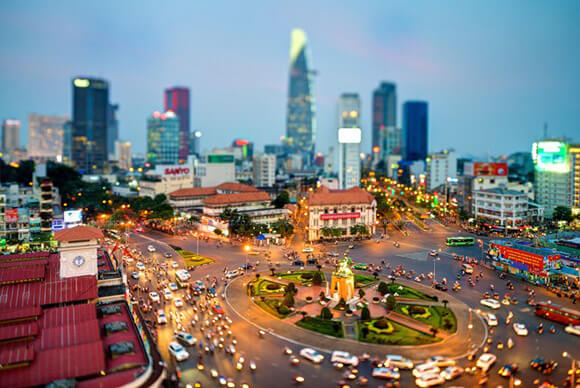
Ho Chi Minh City, is still known as the former name as Saigon, is the most populous city, is also the important center of economic, cultural and educational of Vietnam. Based on the natural area, the Ho Chi Minh City is the second largest city of Vietnam, after Hanoi’s extansion. Currently, Ho Chi Minh City, beside the capital Hanoi, is the special grade city of Vietnam. This area was originally known as Prey Nokor, then the city formed thank to the southern mining of the Nguyen Dynasty. In 1698, Nguyen Huu Canh established Gia Dinh Palace, marking the birth of the city. When the French invaded Indochina to serve the mining colonial, Saigon was established and quickly grew to become one of the most important city in Vietnam, named as Eastern Pearl or Paris of the Oriental. After the collapse of South Vietnam during the event April 30, 1975, Vietnam territory is completely unified. Saigon was renamed "Ho Chi Minh City", in the name of the first President of the Democratic Republic of Vietnam. Ho Chi Minh City is located in the south of Vietnam about from 1,730 km Hanoi by road. With the location in the center of Southeast Asia, Ho Chi Minh City is an important transportation hub for roads, waterways and air, connecting the provinces in the region and also an international gateway. Visiting Ho Chi Minh City, apart from immersed in the bustle life of the city, tourists will be visit many famous monuments such as the Independence Palace, the City Theatre,...